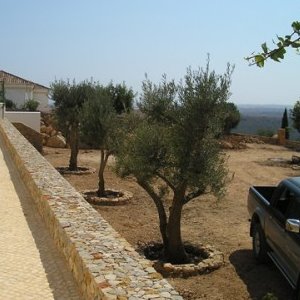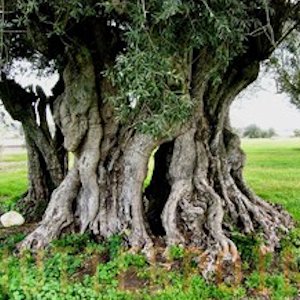Landscape With Olive Trees
How to Landscape With Olive Trees
Overview
 The olive family of trees are native to the Mediterranean and evoke a distinctive mood with their dusty, fine foliage, airy canopy and prominent fruits. Olive trees can be planted as ornamental specimens, as functioning orchard trees, in small stands and even pruned into topiary or elevated tree hedging.
The olive family of trees are native to the Mediterranean and evoke a distinctive mood with their dusty, fine foliage, airy canopy and prominent fruits. Olive trees can be planted as ornamental specimens, as functioning orchard trees, in small stands and even pruned into topiary or elevated tree hedging.
The olive tree,
02.03.16
 Grow olive trees in climates with long, hot growing seasons in keeping with their Mediterranean heritage. Ensure sites are free from late spring frosts but sufficiently cold winter temperatures to set fruit, if fruit production is desired, with temperatures above -2.3 degrees Celsius.
Grow olive trees in climates with long, hot growing seasons in keeping with their Mediterranean heritage. Ensure sites are free from late spring frosts but sufficiently cold winter temperatures to set fruit, if fruit production is desired, with temperatures above -2.3 degrees Celsius.
Site your olive trees where they will receive full direct sunlight daily and are not shaded by canopy trees. Place fruit bearing olive trees away from hardscape to prevent staining and regular cleaning maintenance.
Allow a planting location to accommodate the height and spread of your olive tree at maturity with a maximum height of 10 meter and a width of 9 meter unless you plan to prune it consistently. Plant multiple trees at intervals of at least 6 meters or 20 feet unless growing as an elevated tree hedge.
traditionally the symbol of peace and tranquillity
01.20.16
 The olive, traditionally the symbol of peace and tranquillity, has long been a prominent feature of early western landscapes and orchards, providing shade and food to those who nurtured it. Originally brought to Portugal from Spain , this member of the Oleaceae or ash family, thrived in the sub-tropical climate similar to the warmest portions of the Mediterranean..
The olive, traditionally the symbol of peace and tranquillity, has long been a prominent feature of early western landscapes and orchards, providing shade and food to those who nurtured it. Originally brought to Portugal from Spain , this member of the Oleaceae or ash family, thrived in the sub-tropical climate similar to the warmest portions of the Mediterranean..
Olea is the classical Latin name for the Olive, which has been cultivated for centuries. The species name would accurately describe the olives European origin. The olive is an evergreen, with opposite phyllotaxy and gray-green, smooth margined leaves typically found in lengths of two to three inches. The spring flowers are small, white and fragrant, produced on short clusters known as panicles.
All olives require a pickling process to remove a compound in the flesh which causes extreme bitterness. Several methods may be utilized to render the fruit edible, all rather tedious, requiring lye and/or brines. Most consumers would find the commercially prepared olive far more convenient in comparison.